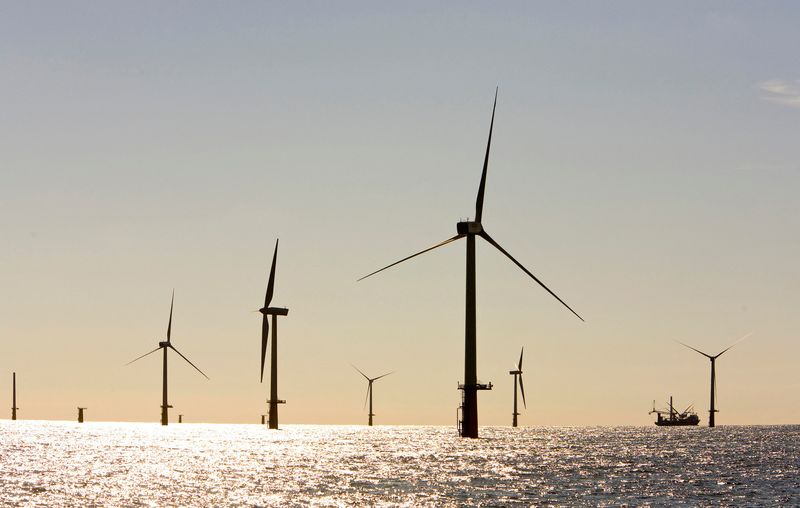AMSTERDAM (Reuters) - Costs have risen significantly in the past year for the Netherlands' multi-decade plan to connect its power grid to proposed North Sea wind farms due to rising interest rates, the country's Economic Affairs Ministry said on Tuesday.
The global offshore wind sector has seen huge cost increases due to inflation, slowing development in countries such as Britain and the United States and placing emissions-reduction goals in jeopardy.
Natural gas accounts for slightly more than half of the Netherlands' electricity generation, with most of the rest produced by renewable sources like wind and solar.
Under the Dutch system, private firms, such as Swedish-owned Vattenfall, bid for concessions to build wind farms while the state ensures proper grid connections.
In a letter to parliament, Energy Minister Rob Jetten said that offshore grid costs from 2032 to 2057 will be 35.5 billion euros, instead of the 26 billion euros flagged last year, citing figures from electricity transmission system operator TenneT.
Rising interest rates as well as inflation and higher maintenance expenses are driving up the costs, Jetten said.
TenneT is fully owned by the Dutch government, but Germany is seeking to buy TenneT's large German operations to have greater say over crucial infrastructure for cutting the use of fossil fuels.
The Netherlands supports splitting TenneT, given its grid capital spending plans of more than 100 billion euros in the coming decade, which taxpayers of the two countries will ultimately bear.

Jetten said the Netherlands is on track for installing and connecting 4.5 gigawatts (GW) of offshore wind energy this year and 21 GW by 2030.
One gigawatt of electricity is enough to power a million Dutch households, though North Sea wind is irregular and often peaks at dawn and dusk.